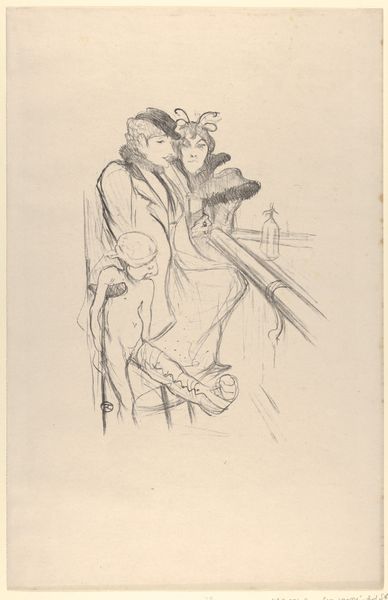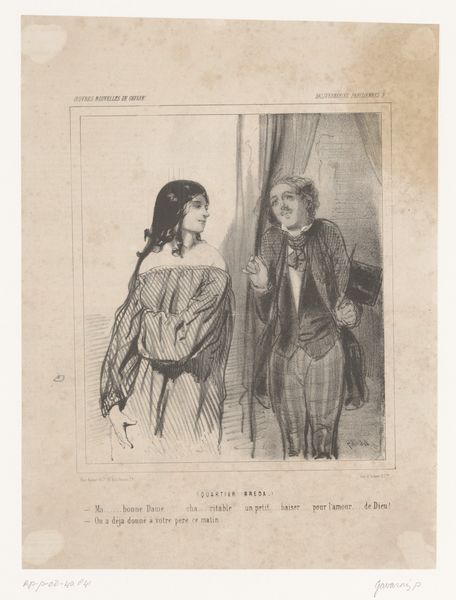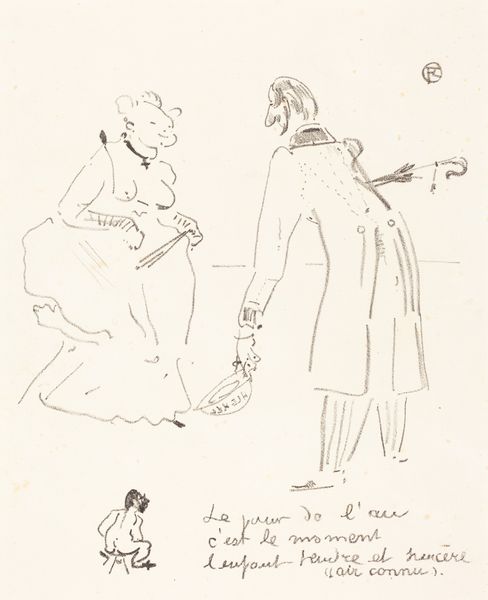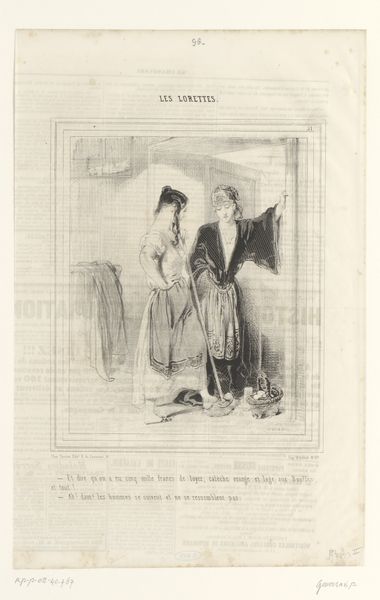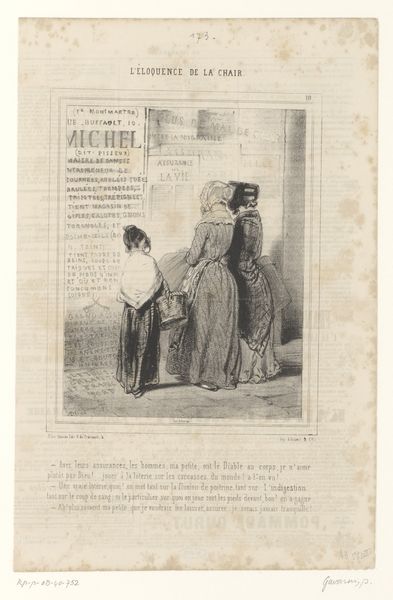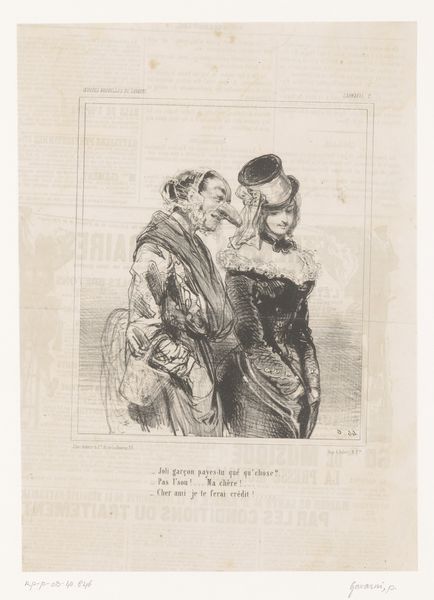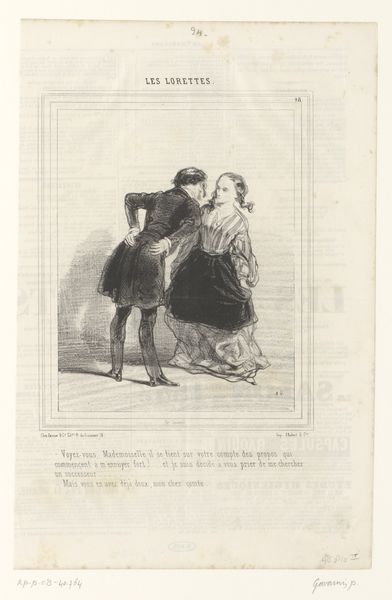
drawing, paper, pen
#
portrait
#
drawing
#
narrative-art
#
pen sketch
#
figuration
#
paper
#
text
#
symbolism
#
pen
#
erotic-art
Copyright: Public domain
Curator: This drawing, "Ma Dit Ma Mie," from 1895, is by Théophile Alexandre Steinlen. It seems to be a pen sketch, likely made for publication, and includes not just an image but also musical score and lyrics. What strikes you initially? Editor: Well, the immediate impression is jarring. There’s a white woman in a state of distress, juxtaposed against the figure of a Black man standing in a doorway, formally dressed. The composition feels…uneasy. Curator: Uneasy is a very apt descriptor. This image functions as a commentary on gendered power relations and racist tropes circulating in France at the time. We see, rendered in a popular medium, the visual shorthand used to create "types." Editor: The lyrics above do contextualize it somewhat; it does look as if it accompanies a song, yet one cannot disregard how social and political attitudes of the period can inform, and frankly mar, one's understanding of this pen sketch today. Curator: Precisely. The lyrics offer one reading, but the visual language is layered with societal baggage. We must consider how the caricature reinforces and perpetuates harmful stereotypes prevalent within both art history and society. What appears as erotic or playful, could also indicate violent social relations in play. Editor: Absolutely, we see how the music, traditionally a source of pleasure and shared experience, is here complicated and potentially weaponized in relation to representation and social norms. It calls into question the presumed universality of artistic enjoyment. The black and white figure is also positioned lower in the image—is that not another signifier of lower status? Curator: These racial dynamics are crucial to unravel. The spatial hierarchy further emphasizes power imbalances. Editor: This really sheds light on the uncomfortable truths that art can reveal about past prejudices and the critical perspective needed to avoid perpetuating it into the present. It's certainly been a real education, seeing art through this very specific historical, socio-cultural lens.
Comments
No comments
Be the first to comment and join the conversation on the ultimate creative platform.


